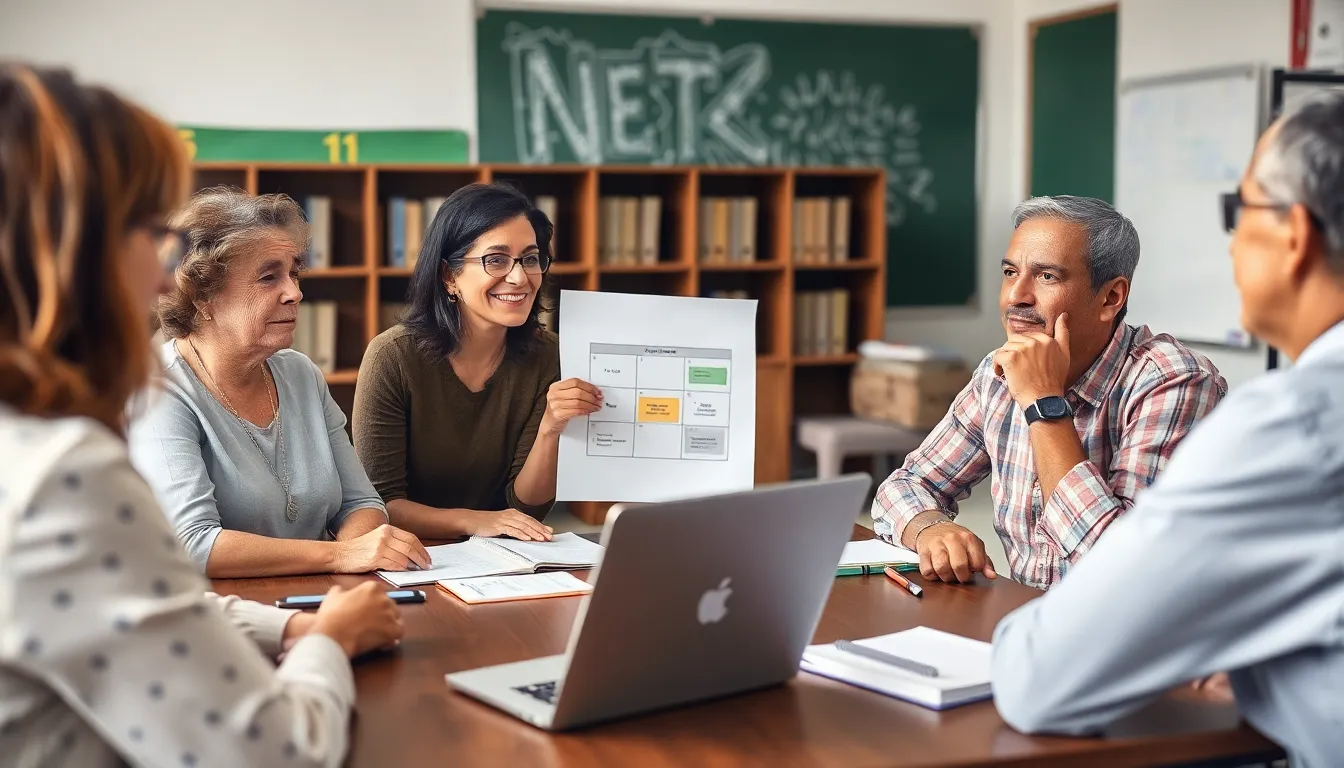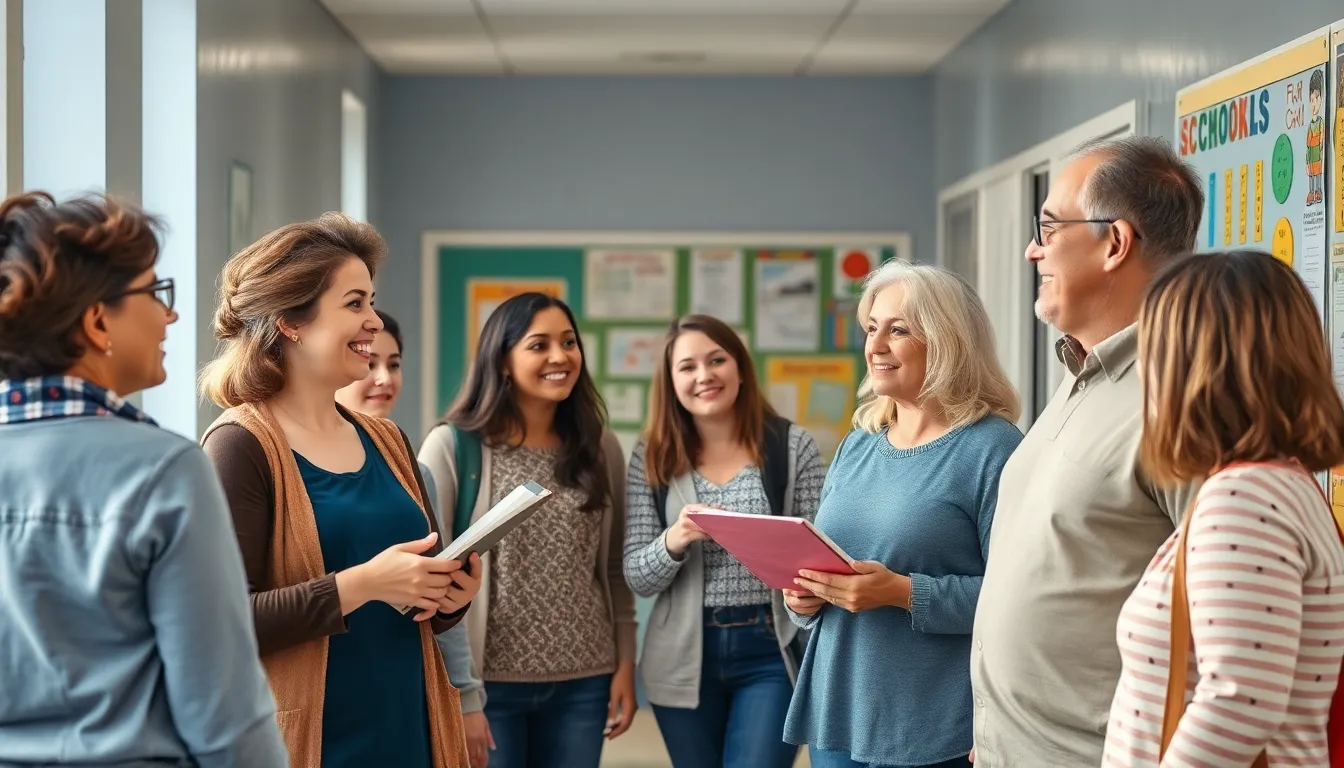In the world of education, parent-teacher communication is the secret sauce that transforms classrooms into thriving learning environments. Picture this: a teacher armed with insights from home and a parent equipped with knowledge from school. Together, they create a powerful partnership that can boost student success.
But let’s be honest—navigating this communication can sometimes feel like trying to decipher hieroglyphics while riding a unicycle. Between busy schedules and endless emails, it’s no wonder that connections can get tangled. Yet, when parents and teachers collaborate effectively, they unleash a wave of positivity that can elevate a child’s educational experience. So, buckle up as we explore the art of parent-teacher communication and discover how a little effort can lead to big rewards.
Table of Contents
ToggleImportance of Parent-Teacher Communication
Effective parent-teacher communication plays a critical role in fostering student success and promoting a supportive educational atmosphere. Regular interaction strengthens connections that benefit children’s learning experiences.
Building Trust and Relationships
Trust forms the foundation of effective parent-teacher communication. Establishing open dialogues allows parents to share insights about their children, while teachers can communicate classroom dynamics. Transparency in interactions enhances mutual respect between parents and educators. Regular updates about academic progress create a sense of partnership. Encouragement of parent involvement in school events fosters community ties. This collaborative spirit ultimately leads to a more positive educational environment for all parties.
Enhancing Student Learning
Significant improvements in student learning arise from strong parent-teacher partnerships. Parents who engage in their child’s education contribute to higher academic achievement. When teachers provide tailored feedback, students can understand their strengths and areas for growth more clearly. Consistent communication about individual needs helps in setting realistic academic goals. Attendance at parent-teacher conferences creates opportunities for deeper insights into educational strategies. Collaborative efforts lead to higher motivation and engagement in schoolwork, making learning more effective.
Methods of Effective Communication

Effective communication between parents and teachers strengthens the educational experience. Various methods exist to facilitate this interaction.
Face-to-Face Meetings
Face-to-face meetings allow for in-depth discussions about a child’s progress. These gatherings create an environment where parents can ask questions directly. Teachers can provide immediate feedback, highlighting a student’s strengths and areas for growth. For best results, scheduling regular parent-teacher conferences benefits both parties by establishing consistent touchpoints. Open dialogue ensures parents remain informed about classroom happenings and their child’s social interactions. Personal connections developed during these meetings foster trust and engagement.
Digital Communication Tools
Digital communication tools offer convenient options for parents and teachers to connect. Emails serve as an excellent means for sharing updates, resources, and reminders. Class websites and portals enhance accessibility to important information, such as assignments and newsletters. Messaging apps, like Remind or ClassDojo, enable quick conversations, allowing for prompt responses. Social media platforms can facilitate community engagement and keep parents informed about school events. Utilizing these digital tools streamlines communication while accommodating busy schedules.
Challenges in Parent-Teacher Communication
Effective communication between parents and teachers faces various challenges. Common obstacles include language barriers and time constraints.
Language Barriers
Language differences hinder effective communication. Parents with limited English proficiency may struggle to understand teacher feedback. This lack of comprehension can create misunderstandings about a child’s academic performance. Translators or bilingual staff can bridge this gap. Written materials, including newsletters and reports, should also consider language needs. Providing translated documents ensures all parents stay informed about their child’s progress.
Time Constraints
Busy schedules contribute significantly to communication difficulties. Parents often juggle work, family, and other responsibilities, making it tough to engage with teachers. Teachers, too, face time limitations with large class sizes and administrative duties. Scheduling parent-teacher conferences can prove challenging. Flexible meeting times or virtual options can alleviate this issue. Utilizing communication tools allows interactions at convenient times, ensuring that no parent feels left out of their child’s educational journey.
Best Practices for Effective Communication
Effective communication between parents and teachers is crucial for supporting student success. This section outlines best practices that enhance engagement and foster meaningful relationships.
Regular Updates and Feedback
Regular updates serve as a foundation for effective communication. Timely notifications about academic progress, behavior, and school events keep parents informed. Weekly newsletters or monthly progress reports provide valuable insights into classroom dynamics. Feedback from teachers helps parents understand their child’s strengths and areas for improvement. Utilizing these updates encourages parents to engage actively in their child’s education. Scheduled one-on-one meetings can deepen this exchange, allowing both parties to discuss specific concerns or achievements.
Inclusive Approaches
Inclusive communication approaches are essential for all families, especially those from diverse backgrounds. Providing materials in multiple languages ensures all parents receive important information. Utilizing interpreters during meetings bridges language gaps effectively. Schools can host family workshops that focus on academic strategies, fostering a sense of community among parents. Additionally, offering flexible meeting times accommodates various schedules, making participation easier. Commitment to inclusivity strengthens relationships and promotes steady collaboration between parents and teachers, benefiting all students.
Parent-teacher communication is essential for fostering a supportive educational environment. When parents and teachers collaborate effectively, they create a foundation for student success. By embracing various communication methods and addressing challenges, both parties can enhance their partnership.
Regular updates and inclusive practices ensure that all parents feel involved and informed about their child’s progress. This ongoing dialogue not only builds trust but also empowers parents to take an active role in their child’s education. Ultimately, prioritizing open communication leads to enriched learning experiences and better academic outcomes for students.



